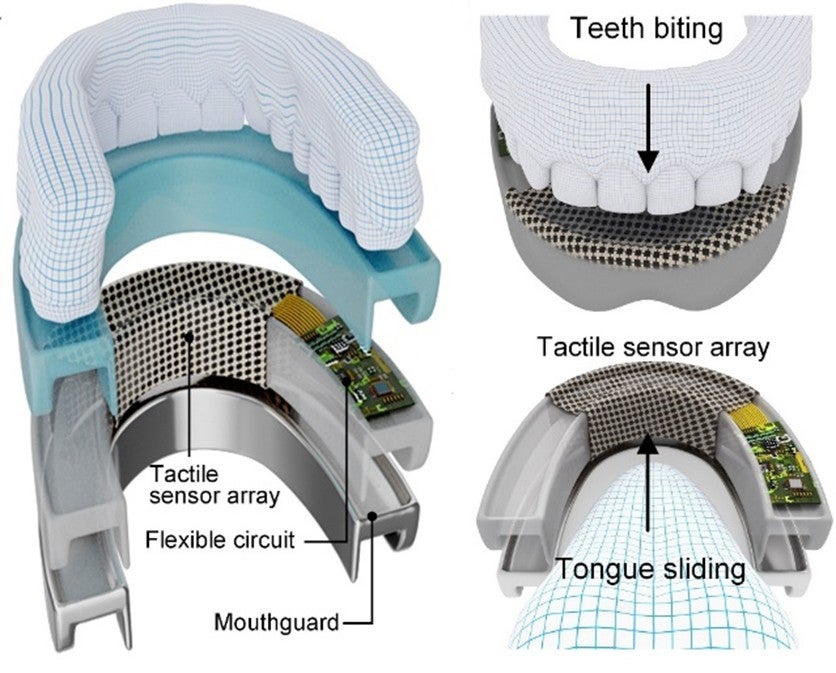Smart oral pad for advanced assistive control
October 07, 2024Researchers at the National University of Singapore (NUS) have developed an assistive technology, a smart oral pad, or “oPad”, powered by artificial intelligence (AI), that offers hands-free control for individuals with limited mobility.
Existing assistive technologies for individuals with restricted mobility, such as voice recognition and head-movement tracking systems, often face challenges in noisy environments or lack intuitive user controls. There is a need for more adaptable, multimodal assistive devices that allow for natural and private control over electronic devices.
Addressing this gap, the research team led by Professor Xiaogang LIU from the Department of Chemistry at NUS has developed the oPad, a flexible mouthguard embedded with a high-sensitivity sensor array that detects tongue movements and teeth biting. These motions are translated into commands that mimic touchscreen and wireless mouse functions, enabling control over electronic devices with minimal effort.
The research findings have been published in the journal Nature Electronics.
The heart of the oPad’s technology lies in its piezoresistive sensor array, composed of carbon nanotube silicone composites, which detect subtle variations in pressure, such as tongue sliding and teeth biting, allowing for seamless hands-free interaction. Integrated with AI, the system achieves up to 98.7% accuracy in recognising user commands, outperforming conventional assistive systems by 50%. This innovative design holds huge potential for improving independence, particularly for typing or gaming and even controlling wheelchairs, making daily tasks more accessible. The oral pad mimics the functionality of touchscreens and wireless mice for hands-free control of devices.
Prof Liu said, “Our technology offers a versatile solution that adapts naturally to the user’s needs. It opens up new possibilities for hands-free interaction across a wide range of applications.”
Looking ahead, the research team will focus on advancing the oPad through clinical trials and exploring industry partnerships in healthcare, sports and security sectors.
“The applications can potentially extend beyond assistive technology, bringing about a new era in human-computer interaction,” added Prof Liu.
| Exploded-view illustrating the integration of electronic components, a tactile sensor array, flexible circuits and a three-dimensional (3D)-printed mouthguard with encapsulation structures, highlighting the detection mechanisms for tongue sliding and teeth biting. [Credit: Nature Electronics] |  |
Reference
Hou B; Yang DZ; Ren XY; Yi LY; Liu XG* “A tactile oral pad based on carbon nanotubes for multimodal haptic interaction” Nature Electronics, DOI: 10.1038/s41928-024-01234-9 Published: 2024.


